Money comes from clients, and clients come from marketing campaigns. So, creating and implementing a successful marketing campaign is essentially the lifeblood of your business.
However, there’s a lack of clear information on how to run a B2B marketing campaign.
The internet is chock-full of examples of B2B marketing campaigns run by Fortune 500 companies, with some theory about why it worked.
Who cares about theory and random examples?
You need an actionable strategy that you can use to run an effective marketing campaign of your own.
In this guide, we’re going to cover exactly that. There’s going to be no list of examples. Instead, I’m going to show you how to successfully build and run your own B2B marketing campaign.
And you’ll see why a single successful B2B marketing campaign can be a game-changer for your firm and even your lifestyle if you’re the owner.
Let’s start.
Contents
Essence of a B2B Marketing Campaign
I know, I know, you’re not 5 years old, and this feels like the unnecessary reading section of a textbook.
If you want to skip past the fundamentals underlying a successful B2B marketing campaign and jump straight to the campaign, click here.
Otherwise, let’s continue.
A lot of people will throw textbook definitions of B2B marketing campaigns at you, but in my mind, a successful B2B marketing campaign is one where you made 2-3x more money than you put in.
This is a very basic definition, but that’s the idea. A successful marketing campaign doesn’t mean:
- Brand awareness
- Aimless social media presence
- Social responsibility awareness
Etc.
These things are fine if you’re already doing over $100m/year, but if you don’t just have cash to spare on useless PR, your first goal is still client acquisition.
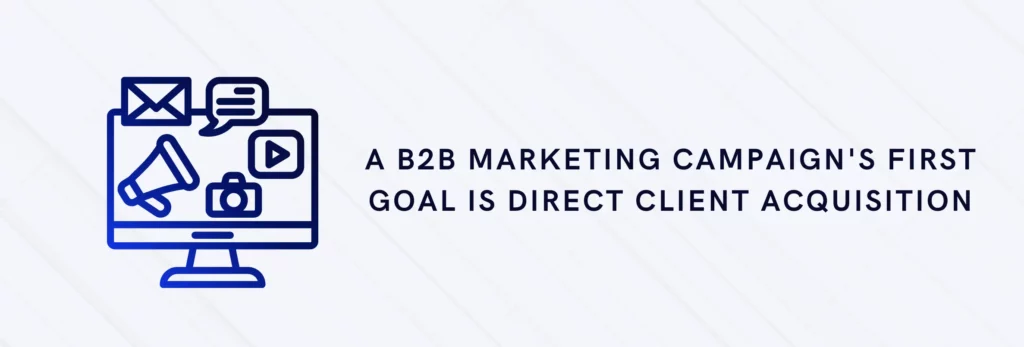
Now, I understand that there is often lag time between running the campaign and acquiring clients, which is perfectly fine. Marketing is not instant.
But I’m not talking about time or how fast the results materialize. I’m talking about the campaign strategy.
It should be direct. You market to acquire clients.
Above all else, you’re a business. You market yourself to show your clients how you can provide value to them, and if they’re convinced you can help, they talk to you.
Simple.
B2B marketing is just like B2C, but amplified.
The biggest difference is the deal size, which, let’s face it, is probably why you went into B2B in the first place.
B2B buyers have a much higher average purchase spend than B2C buyers.
The reason I’ve brought up the price is to help you understand that B2B purchases are not as impulsive or off-the-cuff as B2C purchases. You need to build a very deep level of confidence in your expertise, authority, and trust in your ethics.
The need for authority, expertise, and trust is a lot more pronounced in B2B, which is why the sales cycle is so much longer in B2B purchases than B2C purchases.
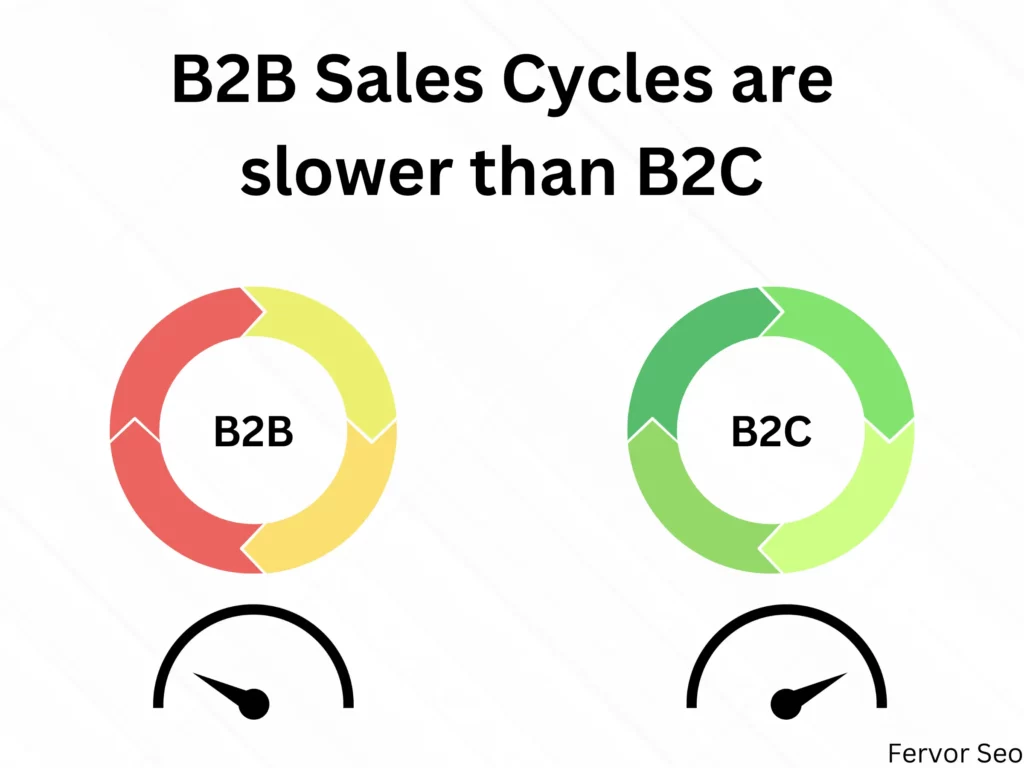
The second biggest difference between B2B and B2C purchases is that B2B does not operate on volume.
Since the average B2B customer spends so much more than B2C, you don’t need to prioritize volume.
All you need to do is prioritize relevance.
This is why quality over quantity is so important in B2B.
The shapes & sizes of B2B marketing campaigns
Outside of referrals, which are mostly organic, there are 4 main types of B2B marketing campaigns:
1. Content marketing campaigns – This means growing your blog to attract clients. This is the best and most effective marketing campaign, and this will be the focus of our own step-by-step marketing campaign further down this article.
2. Email marketing campaigns – This is the second most effective form of marketing for B2B firms. You can get some short-term wins from email marketing, but the sales cycles are much longer, and the number of leads per dollar spent is a lot higher than content marketing.
3. Account-based marketing campaigns (ABM) – This is just a fancy word for building relationships with people who would be your target audience. ABM is basically networking, and as I’ve mentioned before, networking and referrals are mostly organic. There’s no such thing as a networking campaign. You just have to shake hands and be cool. ABM is not a marketing campaign. I’ve only added it here to clarify that.
4. Social media campaigns – Absolute garbage for B2B. This is a surefire way to run your company into the ground. Your target audience is not on social media with the intent to discuss business. LinkedIn, sure. Everything else, no.

Why blog posts are still an unparalleled B2B marketing strategy in 2023
You’ll find a lot of digital marketers, especially those with a social media focus, who will tell you:
“Blogs are dead.”
“You should be on TikTok.”
“Nobody’s going to read all this content.”
Nonsense.
No one with a successful B2B firm will ever tell you blogs are dead.
Here’s the thing: blogs are a straight path to Google’s front page. It is the only way you’re getting on there. And there is nothing on the planet Earth with more reach than Google.
Google is the internet.
Google has more people searching on it a day than instagram has users.
For reference, Google gets 8.5 billion searches a day, while Instagram has 1.3 billion users in total.
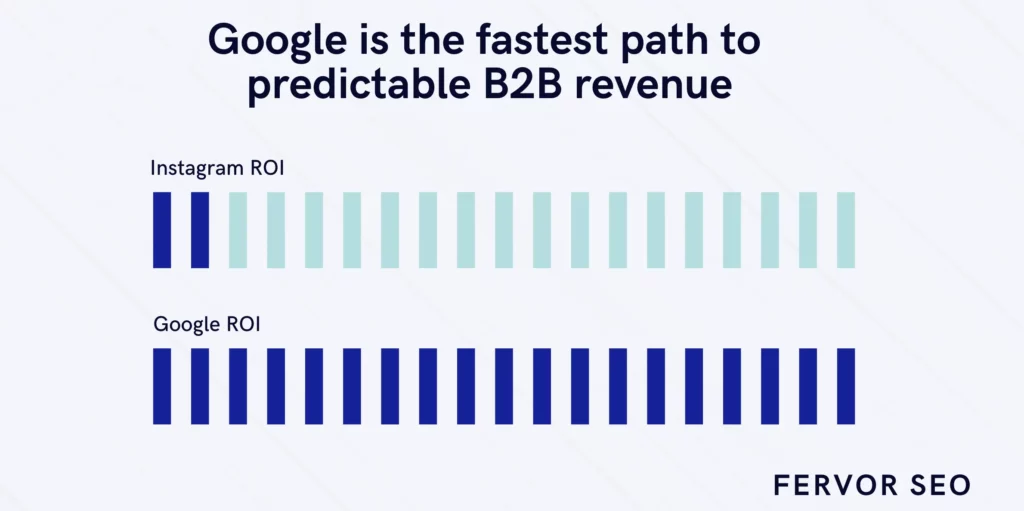
That should give you a clear picture of the difference in size.
But forget about size for a second. Here’s the main benefit of leveraging Google over email or social media: people SEARCH on Google.
No one is searching for your product on email or social media. If they come across it, they might explore it, but there’s no motivation to explore it.
An active search, on the other hand, carries very clear intent. Your searcher is searching with a goal. With B2B searches, the goal is either to get some information or to solve a problem.
If your searcher (target audience) wants to solve their problem, aren’t they more motivated to consume your content on Google than on social media or email? Wouldn’t it then just be common sense to market to them on Google?

The reason you find marketers complaining about blogs being dead is that they’d rather you sign with them and use social media to promote your company for a much, much lower, and probably even negative ROI.
Simply because they don’t know how to market blogs.
We don’t have that problem. Blog posts are the best B2B marketing strategy. And that’s the campaign I’m going to teach you to construct and run.
SUCCESSFULLY.
If you just want to jump to the campaign, click here. Otherwise, we’re going to continue covering the fundamentals of your B2B marketing campaign before moving on to the actual campaign.
Understand how the B2B content marketing funnel works
Here’s what the process of acquiring B2B clients from blog posts looks like.
I’m going to use an example to illustrate this:
Let’s assume you’re an accounting firm, and your target clients are CFOs in technology companies doing around $50m in revenue a year.
So, you post something relevant to them. Let’s say you talk about “How to Streamline Financial Processes with Cloud Accounting Solutions.”
Once your prospective client searches for something like “how to use cloud accounting for XYZ reason,” your post will pop up.
Following which, they’ll click on it.
Once they read through your post, even if your content helped solve their problem, they’ll realize that it’s a lot of work to actually use cloud accounting and takes some skill too.
This arduous process to do the work right will motivate them to outsource the whole thing to you. Consequentially, they’ll book a meeting, and bam!
You’ve got a lead.

Now, it isn’t always going to be this straightforward because there are a lot of variables involved.
Is your post going to show up on the first page of Google?
Will they click on it?
Do they actually have a problem, or are they just randomly looking things up?
Do they have the money to solve their problem?
Did you actually solve their problem?
Has your writing and solution inspired enough trust in them to book a meeting with you?
Etc.
Collectively, these variables determine your conversion rate.
The expected outcome of your campaign is sweet as cherry pie
Are you ready to see the returns you can make through content?
Buckle up.
Using the accounting example from the previous section, I’m going to show you just how much money you can make marketing your blog posts as a B2B firm.
So, let’s say you’ve published 20 blog posts.
Out of which, 8-10 rank for keywords on Google, and collectively rake in about 3k people a month.
Now, we’ll assume a 2% conversion since you’re posting about topics highly relevant to your target audience.
That’s 60 companies reaching out to you a month. Even if your sales team converts 20% of those leads, that’s 12 leads. Assuming your lead’s average spend is $5k, which is a very conservative estimate in B2B, that’s $60k a month.

And here’s the beauty of this strategy:
1. These are all inbound leads since they reached out to you, so you know they’ll be easy to convert.
2. They’ve already researched you and had a taste of your expertise, so half the work is already done. They’re not going to grill you on your competence, thereby shortening or in some cases, completely doing away with the sales cycle. Basically, if they have the money, they’re signing with you after 1-2 meetings.
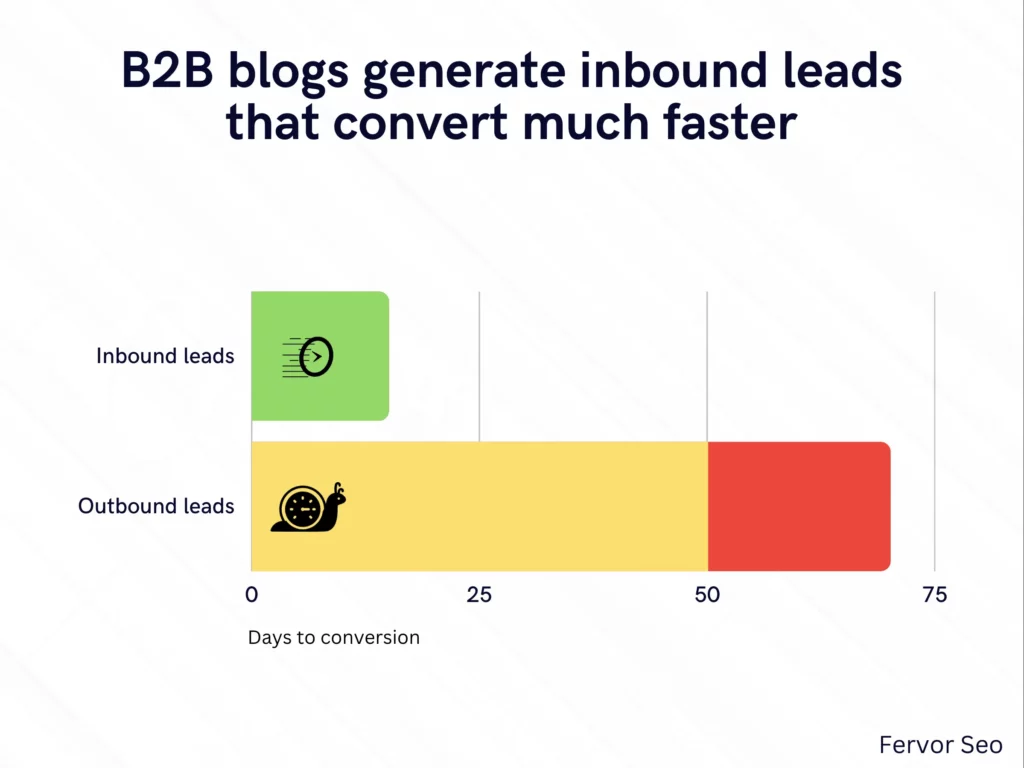
3. I’m not even counting clients that you bill through retainers here. Assuming a 6-month retainer, your leads are spending $30k on average with you.
4. If you can make $60k a month or $720k a year from just 20 blog posts, and it cost you $25k – $30k to have them skillfully created, that’s an ROI of 35x. You made $35 for every $1 you spent. Even if I’m delusional (which I’m not) thinking you’ll yield a 35x return, the margin of safety is so huge that you’ll still end up making crazy sums of money.
Something to keep in mind is that the success of your blog posts directly hinges on the resources you can contribute.
If you can’t afford high-level expertise to create your blog content, you won’t be able to rank your posts on Google’s first page.
It’s too competitive.
For you to try and create 20 blog posts yourself and think you can swoop in there and outrank your competitors is completely misguided.
Your competitors who are currently ranking in the top 10 positions for all the juicy keywords are using seasoned SEOs and expert content writers to create their content.
They are tremendously skilled and won’t just let you smoke them with mediocre content.
You will need to create content that is massively better than theirs for Google to recognize you as the superior player, and you can’t do that without working with the very best content marketers.

So, creating blog posts is expensive because you need to work with experts.
But it’s well worth the resources expended because the returns are equally staggering.
Now, here’s how you launch a B2B content marketing campaign.
Step 1. Design and develop your blog
To start posting blog posts, you first need a blog.
Hire a developer and tell him you want to create a blog section for your website. If you’ve got some money to spare, hire someone for the design too.

Better design will lead to more reader-to-lead conversions.
The development shouldn’t take more than a couple of days. Anything more, and you look for someone else.
The design can take 3-4 days, but don’t sit around perfecting the design till the cows come home. Just get it done and move on. It’s very easy to get caught up in the trap of trying to improve your design.
The things you need to make sure of during your blog development are:
1. The blog section should have a hyperlink in your website menu bar.
2. The blog should be mobile-responsive. In fact, a mobile-first approach is better.
3. Both the blog page containing all the posts and the blog posts should be fast. This is especially important.
4. The blog posts should be indexable. The campaign will fall flat on its face if the posts are not indexable. The blog page with all the blog posts should also be indexable.
5. A template where you can fill in the text for new posts. Make sure the template is flexible, though, not confined to a specific post type like a listicle, how-to guide, etc.
For the blog design, your designer will take care of most of it, but some rules are:
1. The design should be minimalistic, not cluttered.
2. The typography should be large and easy to read. 15px minimum.
3. Light-on-dark typography is better than dark-on-light for readability.
4. There shouldn’t be any items crowding your blog post’s body text.
5. There should be a CTA of your choosing (book a call, meeting, etc.) at the bottom of the page. Here’s an example:
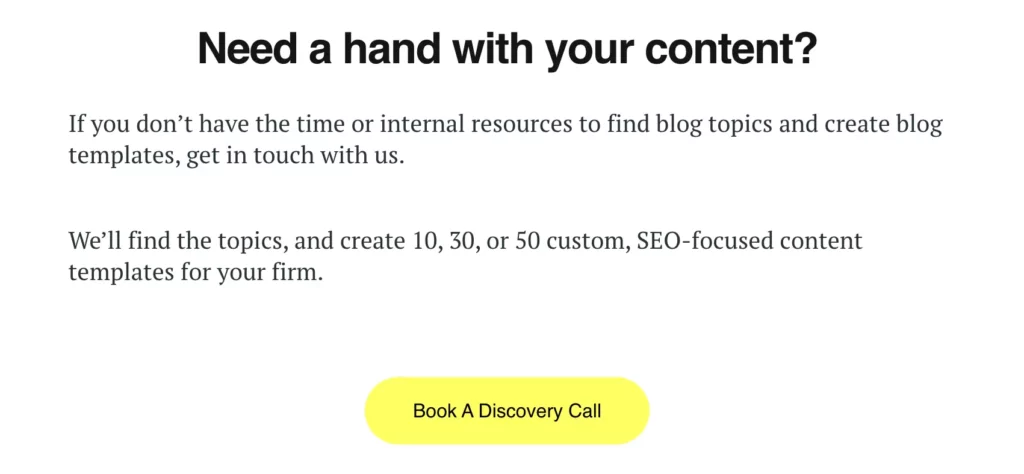
Once you’ve created your blog, you need to start posting content. In this next section, we’re going to discuss how to find the best blog topics to write about.
Step 2. Understand your prospects at their root.
You know what gets clients through the door?
Content that looks like it was made for them. For them specifically.
When your prospects come across a piece of content that speaks directly to them, it makes them feel heard and makes them trust you.
Cause why wouldn’t they?
You’re thinking the exact same thoughts as them, so you’ve validated yourself as a company with the correct thought process.
For reference, can you remember a book, an article, or a video that you came across which made perfect sense for your situation? Did that not instantly make you think, “Oh wow! The author/speaker’s a genius?!”
To have this effect on your prospective clients, you need to deeply understand them beyond just their business goals.
Once you understand your client, you’ll be able to talk in words that make sense to them.
Everyone is promising your client more money, but if you can get their attention by displaying a similar thought process as them, they will trust you and your competence a whole lot more.
The best way to understand your client on a personal level is through Reddit.

I’ll use the example of a financial consultancy to explain this.
Let’s say you’re a financial consulting firm that works with fintech startups to help them develop their product.
When you head over to the r/fintech subreddit, you’ll find a bunch of people troubleshooting fintech-related problems. Not only is this a great opportunity for you to gather a ton of client “pain points,” but you can comb through the posts and comments to find fintech startup owners.
Then you can review their profiles to see the types of questions they ask, what their thought process is like, etc. Look up at least 5 individual profiles and create 1 persona that is like a mixture of all 5.
This will tell you everything you need to know about how to communicate with them because you’ll understand them better as people now.
It may feel intrusive, but your competitors are literally buying data to do this. All I’m advising is you use a public social media network to “stalk” their profile.
Once you know what your client is about, let’s discuss finding blog topics that would be important to them.
Step 3. Use keyword research to decide what to write about
This is the secret sauce to dethroning your competitors.
You’re going to collect a large list of keywords using SEO suites like Ahrefs, Semrush, etc., to see what keywords your competitors are ranking for and keywords relevant to your industry.
You can input your competitors’ websites into these tools to gather all their keyword data, and you can search for keywords related to your industry.
Like this:
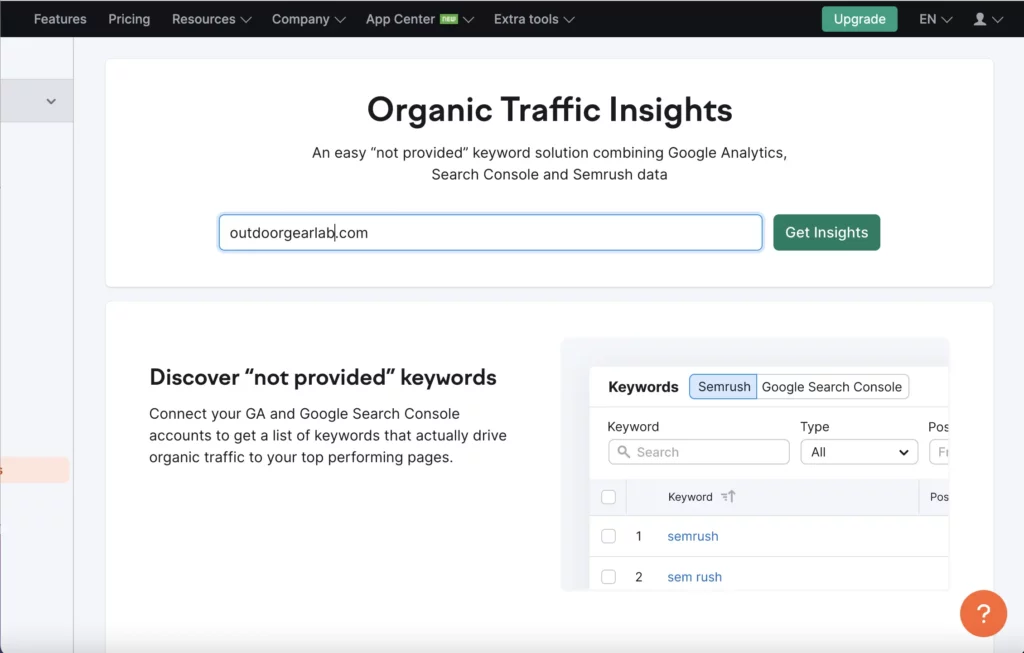
Then you’ll get a huge list of results:
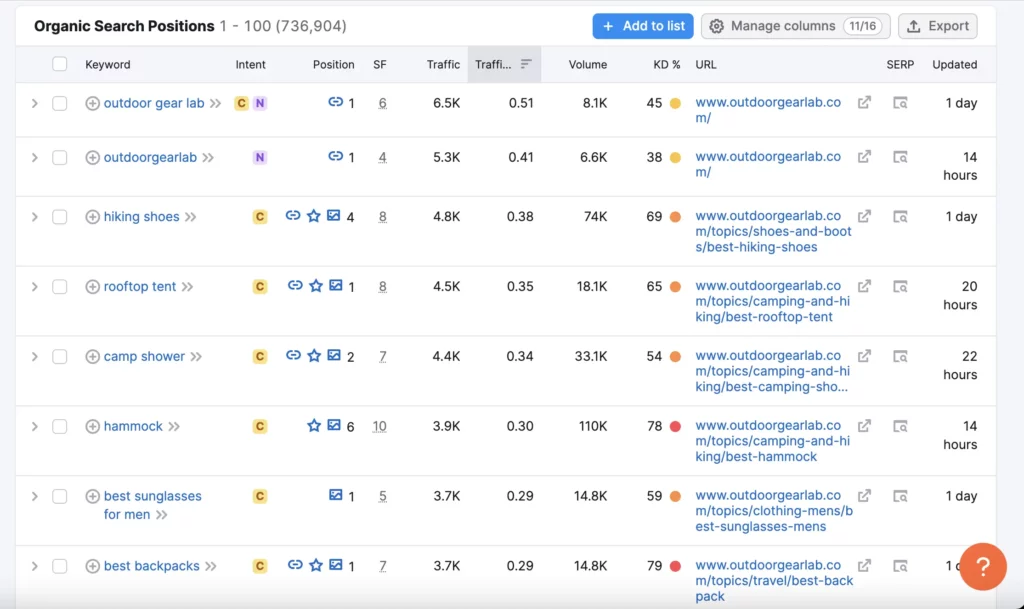
Once you have a large list of keywords, you’re going to find all the keywords relevant to your business.
We use a very sophisticated keyword research and clustering process for this, but it’s very analytical and complex. If you’d like to use that, you can reach out to us.
Otherwise, I’m giving you a simpler strategy you can do yourself.
First, take your large list of keywords and paste them all into an Excel sheet.

Once they’re on the sheet, you can use the find feature in Excel to search for keywords that contain industry terms.
For example, if you’re an accounting firm, you’ll be searching for:
– “CPA”
– “Accounting”
– “Budget”
– “Financial plan”
Etc.
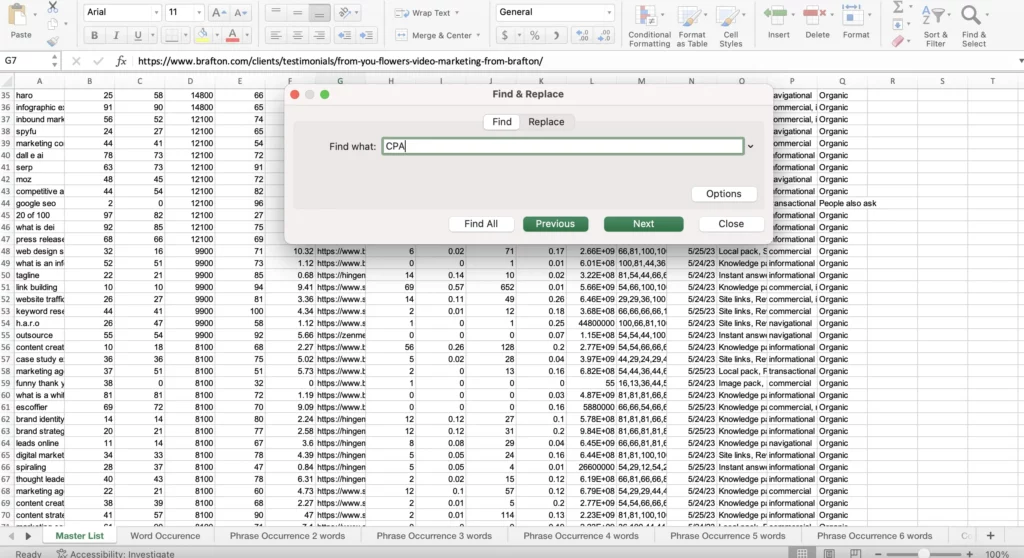
Using 20-30 terms like the ones above will reveal at least 500-1000 associated keywords if you have an adequately large list of keywords.
Take the keywords being revealed to you and paste them on a separate sheet.
Then sort that sheet by search volume.
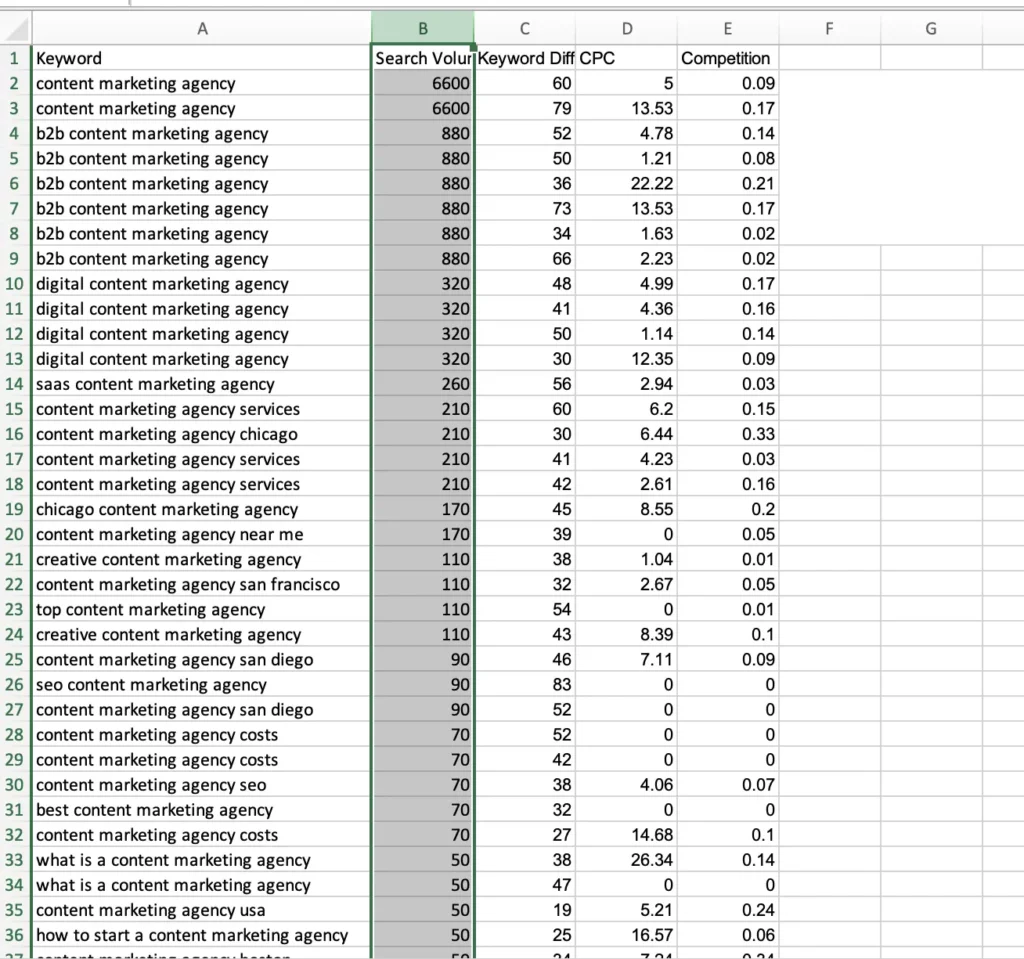
You want to create content around keywords with high search volume and low keyword difficulty.
Most high search volume keywords will be too difficult for you to rank for in the beginning, but you can rank for some lower search volume keywords with lower keyword difficulties and target more relevant audiences.
There’s a twist, however. Keyword difficulty is not always an accurate measure of how hard it’s going to be for you to rank.
Here’s why.
Sometimes longer keywords, commonly known as LTKs, are actually a small part of a larger topic that Google interprets as the real topic searchers are looking for.
The real topic will be represented by a different keyword with a much higher search volume and keyword difficulty.
So before choosing a topic to write about, search the keyword to see what Google’s ranking on the first page.
For example, if your keyword is “is LIFO a good method for online fitness equipment inventory”.
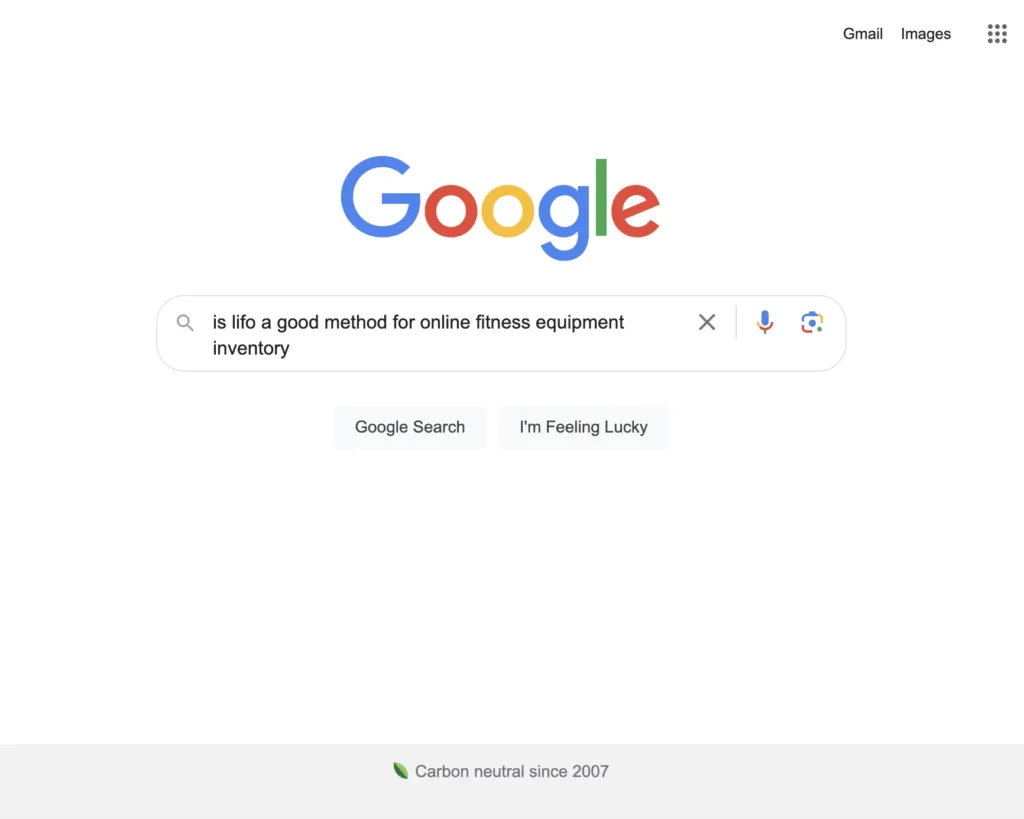
But when you search this on Google, you’re seeing results about “FIFO vs. LIFO.”

The parent topic is “FIFO vs. LIFO” so you’ll want to switch to a topic where the results match the targeted keyword.
This is a very simple but effective keyword research strategy.
Keyword research goes many levels deeper than this, but this strategy that I’ve just given you packs enough of a punch to make quick work of 90% of your competitors and start conquering territory on Google.
Step 4. Do a SERP analysis to spy on your competition's posts
Once your keyword research is done, I don’t want you to start creating content just yet.
First, you need to analyze what your competitors have created through a SERP (Search Engine Results Page) analysis.
I’ll explain what a SERP Analysis is, and how to do it in a minute, but before I do, you need to understand why we’re doing it in the first place.
A SERP analysis reveals your competitor’s strengths and weaknesses and gives you the information you need to beat them.
Ranking on Google is a zero-sum game and extremely competitive. For you to be in the top 10 results on Google, a pre-existing top 10 website will need to be relegated to number 11.

So, here’s how you do a SERP analysis to beat your competitors.
1. Choose a query from your keyword research list.
2. Pop that query into Google. So, let’s say your query is “LIFO accounting methods”. You enter that in the Google search box.
3. Review the top 5 results, and take a note of the post type. Is it a list/how-to guide/case study/etc.?
4. Then, review their strengths and weaknesses, content relevancy, engagement, typography, design, tonality, etc. Also, note each post’s word count.
6. Now, what you’re going to do is create a table with the top 5 results’ strengths and weaknesses and note the common weaknesses. So, for example, if they all have boring content, that can be a massive differentiator for you. Engaging content will keep more readers stuck to your page. Google will see that as a positive sign and bump you up in the rankings.
7. Once you’ve done your SWOT analysis, take the average word count of all 5 posts and double it. You’re going to create the most comprehensive resource on the subject. Thereby allowing Google to index you for more keywords and a higher likelihood of collecting more backlinks. Both of which boost your ranking for your target keyword.
8. Lastly, take a look at how your competitors are presenting the info. If everyone’s doing a list for example, “5 best LIFO accounting methods”, you can approach it from a different angle with “How to choose the best LIFO accounting method”. Doing this reduces the competition but still keeps you relevant enough to rank on the first page.
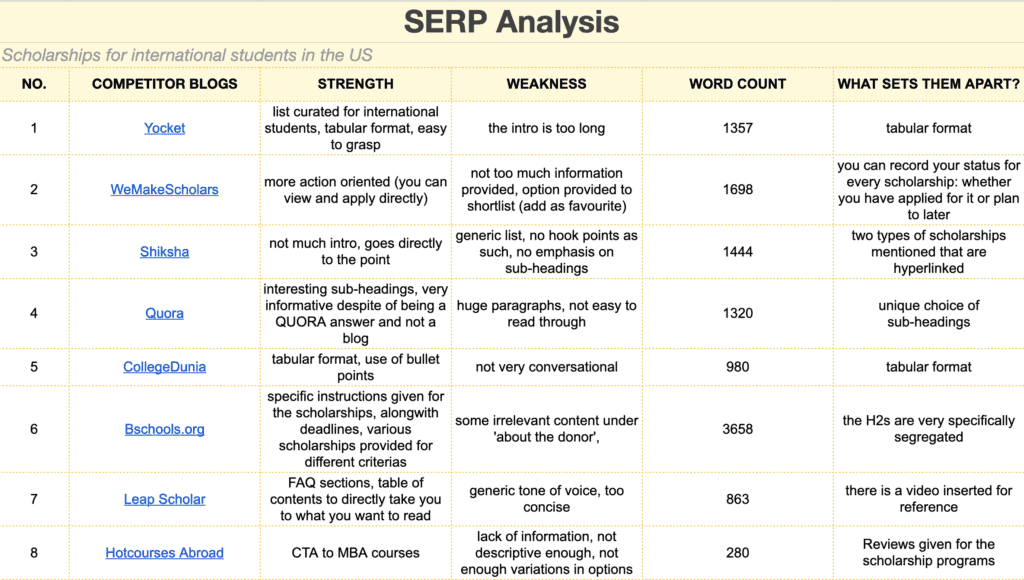
Step 5. Create content that will fetch you your competitors' souls
All right, this is the make-or-break part of the campaign, but if you meticulously followed steps 1-4, you’ll be good. Don’t worry.
So, you’re going to start by going back to the audience persona you created in step 2 and using it as a point of reference for your content.
You’re going to carefully think about what a person like your audience persona wants to talk about and how he wants to talk about it.
You’re going to use those insights to create a content outline for your article.
For example, if your audience persona is the VP of operations at a large health-tech company, his number one concern might not be the advancement of company operations.
His number one concern could be that he’s new and wants to deliver quick short-term wins so the company keeps him in the long run.
So you construct your content outline to address and talk about short wins.
This doesn’t mean changing the topic. It means addressing the topic in such a way that keeps this knowledge in the background and assures your audience persona that you’re aware of this.
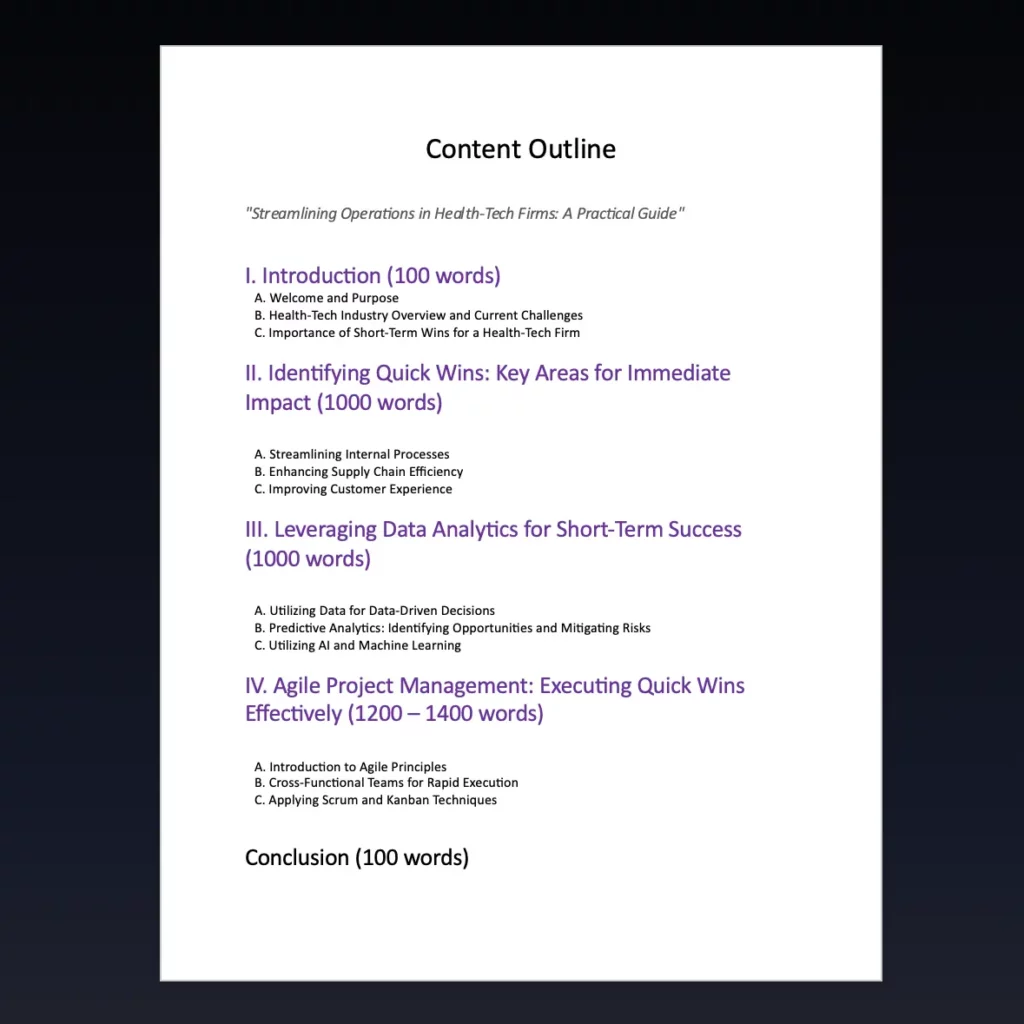
Additionally, he’s a VP of operations, maybe his job is crazy stressful and nobody really gets it.
So, you take a sympathetic tone (not patronizing, of course) to prove you’re on his side.
Now I’m going to show you the type of content you should be creating.
Best post types for B2B marketing
In my experience, there’s 3 types of posts that work drastically better than everything else in b2b content marketing.
1. Case studies

If you’ve actually worked with a lot of companies before and driven solid results for them, case studies are an unrivaled post type.
There’s a reason so many B2B firms have all these case studies they throw in your face, the second you enter a conversation with them.
That’s not the right way to leverage case studies.
You should be posting your case studies on your blog in the context of your prospective client’s problem.
For example, say you’re a tax law firm and you create a case study on noncompliance with sales tax obligations. And in your case study, you demonstrate how you got your client out of trouble.
Do you think someone going through the same situation isn’t going to read that?
He’s going to read through the whole thing and very likely reach out to the firm that dealt with this problem.
2. How-to guides

I’m not going to expand on how to guides too much because they’re very similar to case studies. The only difference is you don’t need to have had a client who you have helped out with the problem you’re addressing.
Just knowledge will suffice.
Here’s the one rule for how-to guides they need to solve a problem, it can’t be something that isn’t a pressing concern to your prospect.
If you’re creating how-to guides on “how to understand payroll tax compliance” you’re good, but if you’re talking about “How to use our superior tax strategies”, god help you.
3. Listicles

Listicles are entertaining, and they fill up the top of your sales funnel.
They’re not as insightful and middle of the funnel as case studies and how-to guides, so they yield a lower conversion rate.
However, they will pull in a lot more traffic than most other types post types, so even with a lower conversion rate, you’ll still find a lot of leads dropping in.
With listicles, I would focus on topics that are interesting to your prospect.
You have the freedom to choose between entertainment and information here, but I’ve noticed a good mix of both gets the most amount of clients through the door.
For example, if you have a “top 10 points on something” type listicle. Keep the first 5 points more entertaining and the last 5 more educational.
Don’t flip it though.
Entertainment first. Education after.
Next, there are some general rules to keep in mind while writing content for the internet.
Let’s go over them one by one.
Basic rules for superior B2B blog posts
1. Be direct – do not waste time repeating facts. If you’ve said something once, there’s no need to say it again.
2. Don’t ramble. Anything that is not directly relevant to your point or the topic of the blog post needs to be trimmed out.
3. Use short sentences. Don’t express in 100 words what you can in 10, and do not create big walls of words. 10-20 words per sentence max.
4. Be firm with your tonality. Do not talk with “might be” and “there may be something you can do”, etc. Weak language does not inspire trust in your expertise.
5. Sound conversational. The easiest way to describe this is to write how you talk. Do not write in a formal “B2B writing style”. Remember your audience persona is a human. Treat him like one.
6. Use simple words. Avoid business-speak. This ties into the point above of talking to your prospect like a human. Don’t write like you just swallowed a corporate dictionary.
7. Sequence your content well. Don’t be all over the place with your writing. Let it follow a logical order.
8. Proofread, misspelled words, grammar, etc.
9. Format your posts with bullet points, numbered lists, emboldened text, etc. It makes the content easier to digest.
All right so that’s all the basic stuff. Now I’m going to show you how to truly smoke your competitors in the rankings using backlinks.
Backlinks, and how to acquire them
A backlink is just another website linking to your website.
Each backlink your company receives is like a little vote for your business from other websites telling Google you know your stuff.

A backlink is just another website linking to your website.
Each backlink your company receives is like a little vote for your business from other websites telling Google you know your stuff.
Backlinks are 1 of the 3 biggest ranking factors on Google. The other two are keyword coverage (content relevance) and rankbrain, which you can’t influence.
We’ve already discussed keyword coverage and how to create better content than your competitors 100% of the time. Now I’m going to show you how to get backlinks.
Firstly, if you already have some level of familiarity with backlinks, you’ve probably heard about these link-building techniques:
- Broken link-building
- Ego-bait
- PBNs
- Directory submissions
I wouldn’t use any of these techniques.
These are all manual outreach methods of link building, and not only are they super time-consuming, but they also have a very low ROI.
And some of them, like PBNs, are in direct violation of Google’s terms and conditions.
So, what is the best way to acquire backlinks?
Organically.
Through your content.
Using a skyscraper posting strategy, you can naturally acquire backlinks. All you have to do is create the most comprehensive piece of content on a given topic.
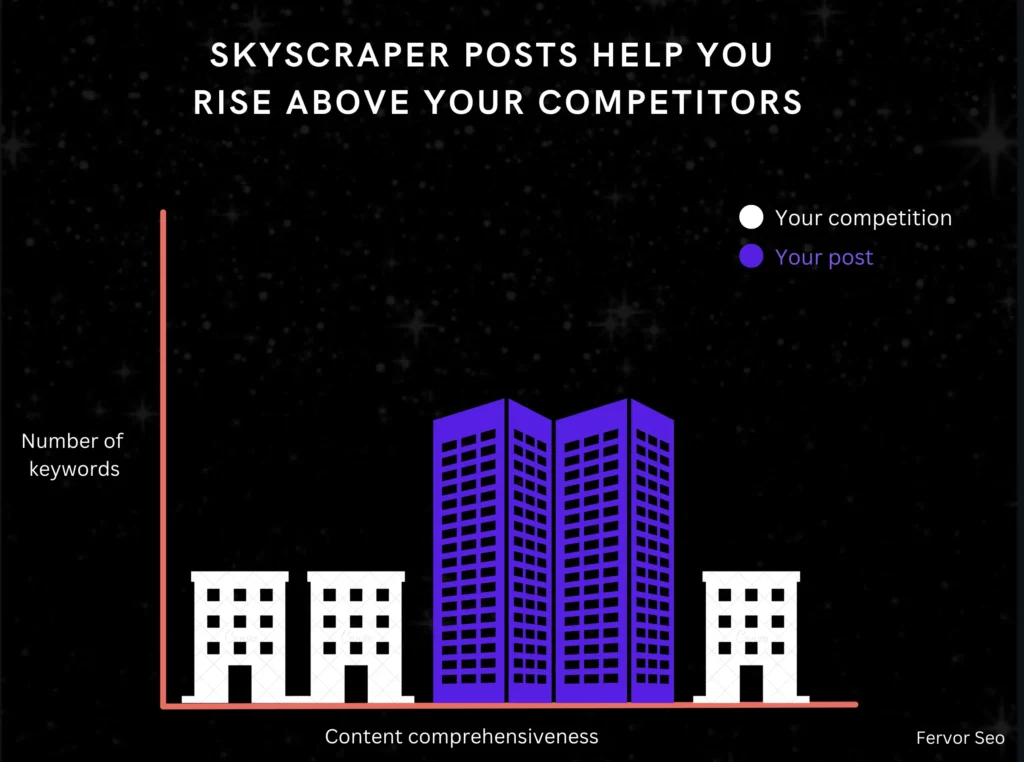
Thankfully, I’ve already shown how to leverage a skyscraper strategy using the SERP analysis and audience personas.
So, you’re covered.
Here’s a little pro tip to boost your backlink acquisition. Use a lot of custom infographics, and give them relevant filenames. These infographics will rank on Google independently, and people can link to them directly.
Step 6. Use Internal linking to accelerate your campaign
Internal linking can speed up the whole campaign by boosting topical authority.
So, when your website receives backlinks, what will inevitably happen is some posts will receive more backlinks than others.
This concentrates the link juice in a single post, which is great for that post, but does nothing for your website’s topical authority as a whole.
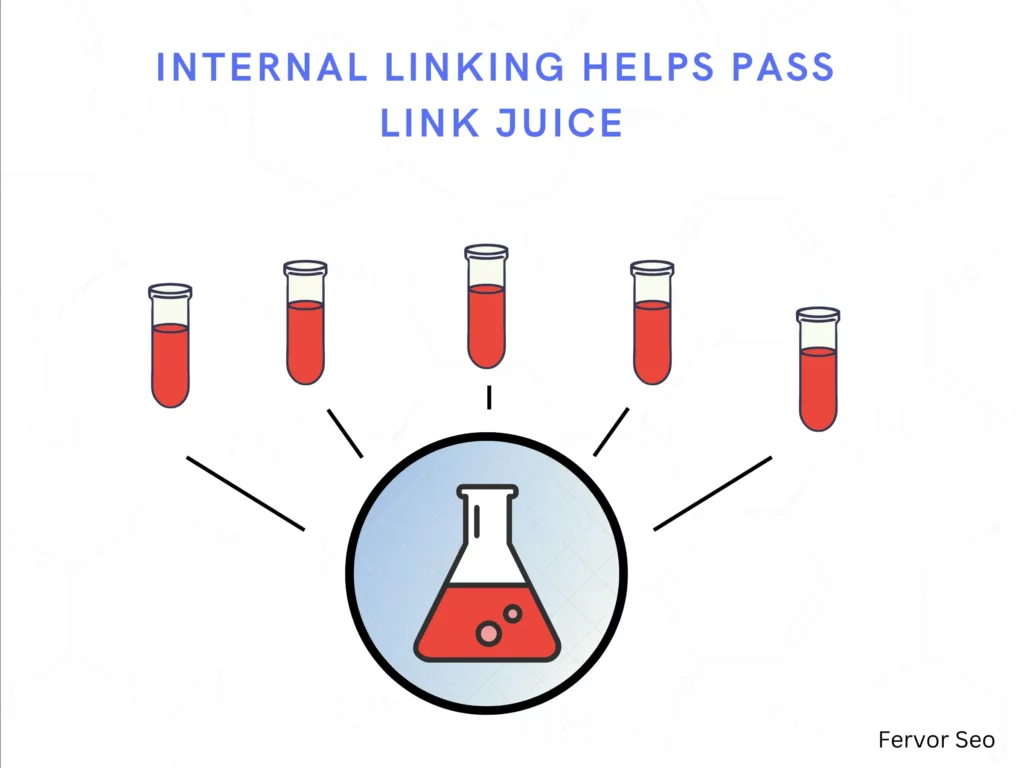
Topical authority is a measure of how well you know your niche. The more topical authority you have on Google, the easier it will be for you:
- To rank new posts.
- To rank for more keywords.
- To rank for high-competition keywords over which your competitors have a stronghold.
To raise your topical authority, distribute link juice from posts with strong backlink profiles to relevant posts with weak backlink profiles.
You pass link juice by linking from one page to another.
To read more about internal linking, I’ve created a separate post on it.
(That is an example of passing link juice from this page the linked page)
To clarify, posts with a lot of backlinks from relevant websites can be defined as post with strong backlink profiles.
You can check your backlink profile on any SEO suite, like Ahrefs/Semrush/etc.
Step 7. Use a newsletter to promote your content
This adds an element of email marketing to the mix. The biggest advantage that you’re going to see from using a newsletter is that you get a direct line to prospects.
You don’t have to sit around waiting for Google to rank you. You can immediately start mobilizing your content through a newsletter.
You’re not going to sell anything through your emails. You’re simply going to provide value by promoting your content.
Here’s why that’s so important for you:
1. It gets eyeballs to your content right away. And if your content is good, which it should be, you’ll start logging positive user behavior on Google. The positive user behavior will signal to Google that your content is good, and you’ll start blazing through the rankings.
2. It allows you to funnel your prospective clients to your blog post, which then funnels them to book a meeting with you. It’s an effective way to ensure, you’re always filling the top of the sales funnel.
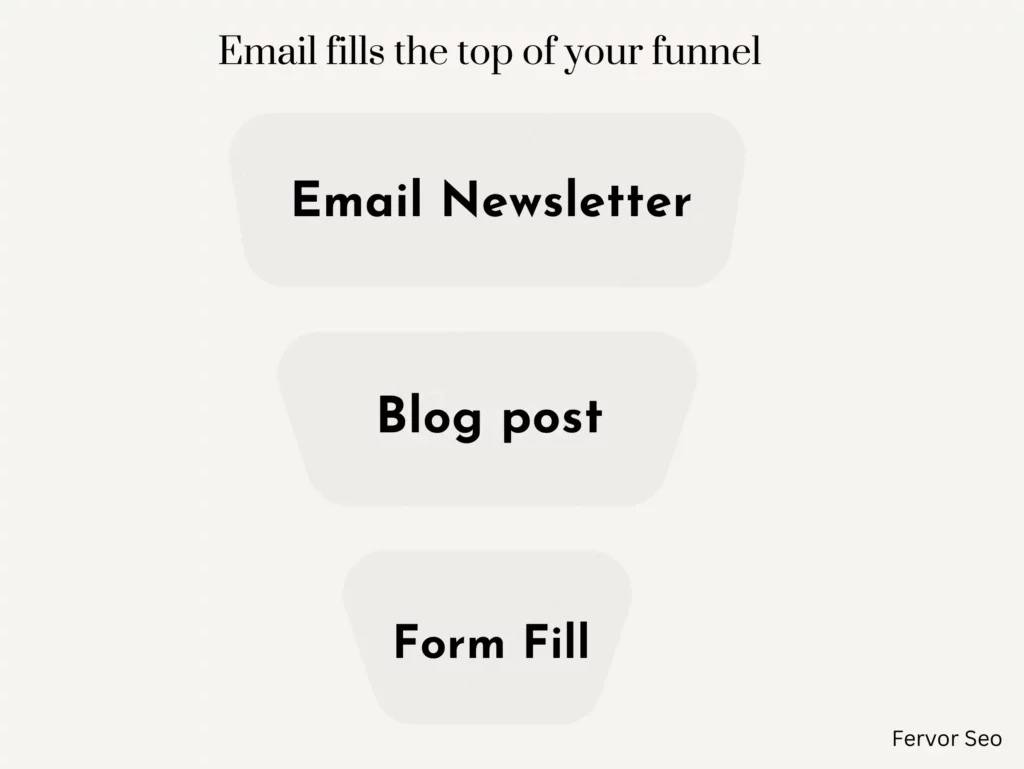
3. It keeps your company top-of-mind. Even if your readers aren’t interested in clicking the link to your blog post, who do you think they’re turning to when they need help? Any time the need for your service arises, where do you think they’re turning? They’re turning to the only company they know of, or the only company that’s been providing them value.
Here’s how to set up your newsletter:
1. Collect some emails, and keep collecting prospective emails with time.
2. Then whenever you post a new blog post, create a small excerpt to send to your email list. This excerpt will be a concise view of a problem, its outcome, and the solution. Kind of like a preview to draw your audience to the full post.
3. Once your excerpt is ready, you’ll use MailChimp or whichever email automation tool you want to send your emails.
How to scale this campaign
I mentioned earlier how a single successful B2B marketing campaign can be a game changer.
Here’s how.
The truth is, you only need one strategy to work, and then you can scale it into oblivion.

And the only real challenge you’re going to face in scaling it will be quality. Maintaining the same level of quality on a larger scale. But even if your quality drops, say 10%, and as a result, the ROI reduces by 20%, your ROI is so huge anyway that you’ll still see massive growth.
So, here’s what scaling this would look like for you.
Let’s say you have a budget of $30k to start, nothing major. So, you invest it to get your first 30 blog posts ready.
Then within 4-6 months those posts start ranking, and within a year you have $60k available to you, so now you drop $60k on content creation and pre-emptively expand your fulfillment team.
Once again within 4 months, your content starts ranking, and within 8 months, it’s making you $100k per month.
Assuming you now have 90 posts, out of which 35 – 40 are ranking and bringing you 10k – 12k people in traffic with a 1% conversion rate. That’s 120 leads. At an average spend of $10k, if you close even 10 of those leads, that’s $100k.
I’m also assuming a faster turnaround time for the content to start ranking because of your increasing topical authority.
So now you drop $120k on your content.
This is where it gets really fun because now you’ll have topical authority, so you’ll rank faster, and all your previous posts will start ranking for even more keywords.
You get 150 blog posts created + the 90 you already have, so you now have 240 blog posts. And within 4 months, 120 of those posts are ranking. Assuming an average of 400 monthly visitors to each post, that’s 48k monthly visitors to your site. I’m just going to save you the math that I did in the previous content cycle.
Assuming the same conversion rate, that’s $400k a month.
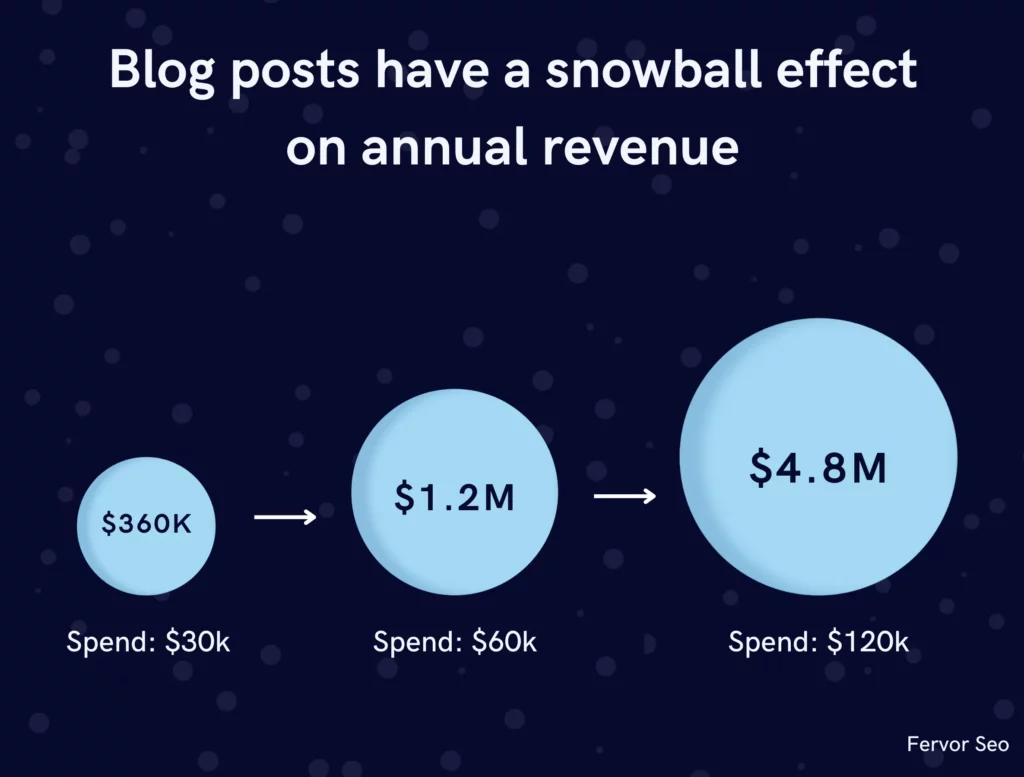
At this point, you can continue scaling or reduce the conversion rate and only take on large clients.
So instead of working on measly $10k retainers, you can now do $100k retainers.
Whether you choose to increase your client size or volume of clients is your call. I wanted to show you can use a content marketing campaign to conquer your niche.
Move like a snail or a cheetah
Now that you know how content marketing campaigns work and you’ve seen the enormity of their success, you have two options:
1. You can go it at yourself and try to rank your blog posts.
2. You can hire an agency.
Going at it yourself can be a great learning experience and teach you content marketing.
But you’ll need to practice quite a bit before you’re able to outdo your competitors. They’re likely using professionals with decades of content marketing experience. You’ll need at least 50 content pieces under your belt before you can even think of taking them on.
This can take up to a year if you already have a full-time job. And the whole campaign will get delayed by a year.
Besides, content marketing is a gold mine right now, so it’ll be way more competitive next year than it is this. The alternative is to leverage an agency and just let them handle this whole campaign from A – Z. While you just wait for your leads to start coming in.
We can implement this strategy faster and better than anybody else since we were the ones who designed it. The whole thing should take us about 6 weeks, tops.
If you want to talk to us about your marketing, and launch your campaign, reach out to us. We’ll get you set up.







